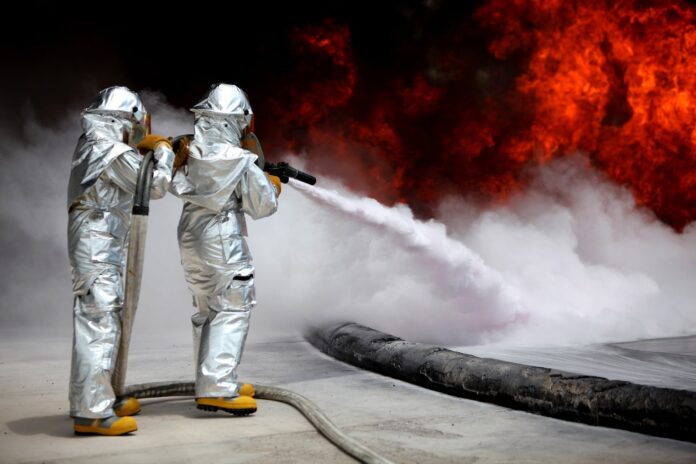For decades, firefighters have been on the front lines, protecting communities from the dangers of fire. However, a hidden danger has emerged in recent years, raising concerns about the potential health risks associated with firefighting foams.
Aqueous film-forming foams (AFFF) are firefighting agents that have been widely used since the 1960s. They are effective at extinguishing flammable liquid fires, including those involving jet fuel and petrochemicals. However, this foam contains PFAS, or “forever chemicals,” that are persistent in the environment and accumulate in the human body due to their longevity.
In this article, we will explore the intricate connection among AFFF, PFAS, and firefighters, delving deep into their interwoven dynamics and implications.
The Role of Firefighting Foam
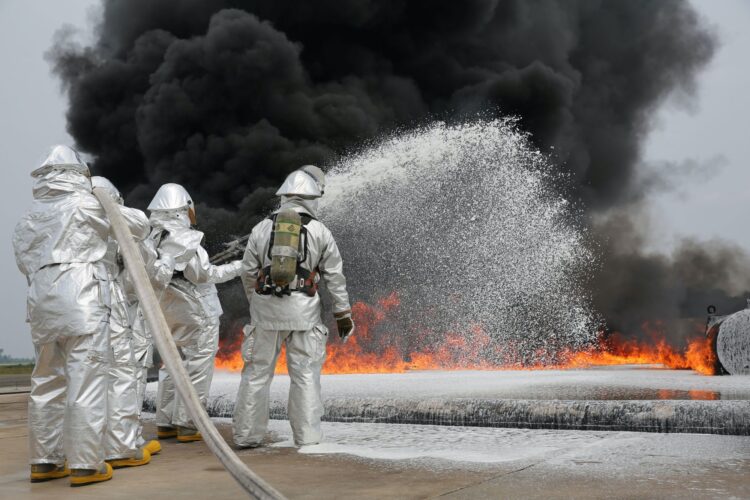
- Source: gdgroup.ie
AFFF suppresses flammable liquid fires, forming a thin film on the fuel surface to prevent vapor release and extinguish the fire. Its swift ability to suppress liquid fires, particularly those involving combustible liquids like petroleum, deems it indispensable in firefighting.
According to NFPA Journal, a study by the Fire Fighting Foam Coalition estimated 10 million gallons of AFFF in the US. Approximately 10% belonged to municipal fire departments. Over 80% was found on military bases, airports, and gas and oil facilities. It highlights the widespread use of these chemicals in diverse sectors.
The extensive utilization of firefighting foams containing forever chemicals has sparked apprehension regarding associated environmental and health hazards. Despite the crucial role these foams play in fire safety, the potential drawbacks of these chemicals demand continuous research. Ongoing efforts in research and development are essential to explore safer alternatives in firefighting practices.
PFAS: The Silent Threat
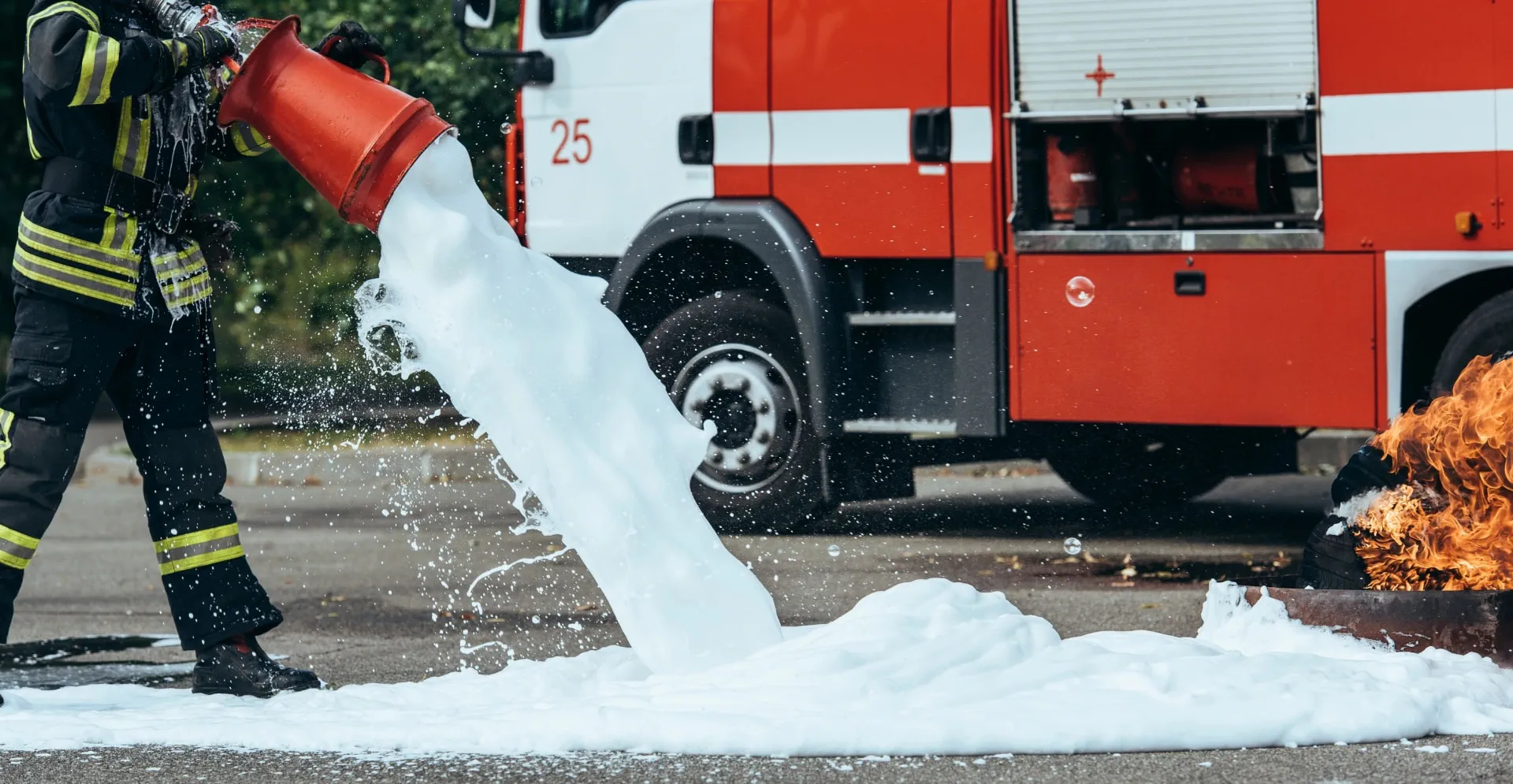
- Source: arcadis.com
A silent threat, PFAS, hides in everyday products, posing risks beneath the surface of seemingly harmless items we encounter. These man-made chemicals, due to their resistance to degradation, have been widely used in various industries for decades. Unfortunately, their persistence has led to widespread environmental contamination, posing a significant risk to human health.
According to Scientific American, out of over 9,000 known PFAS compounds, approximately 600 are actively employed in numerous products across the US. These compounds, prevalent in various products, pose environmental and health concerns.
The widespread use of these chemicals in firefighting foams, non-stick cookware, textiles, and cosmetics underlines the necessity for increased awareness and industry regulations.
Addressing the pervasive presence of these toxic chemicals requires a comprehensive approach to safeguard environmental and human health.
The Link Between PFAS, AFFF, and Cancer

- Source: lawsuit-information-center.com
For decades, firefighters have relied on a vital tool in their arsenal, i.e., AFFF. This highly effective agent excels at extinguishing flammable liquid fires, including those involving jet fuel and petrochemicals. However, a dark side to this foam has emerged, raising critical questions about its potential health consequences. The concern stems from the presence of forever chemicals in firefighting foam.
Studies indicate concerning trends among firefighters, with consistently elevated PFAS levels in their blood compared to the general population. Research links exposure to these chemicals to an increased risk of specific cancers. Also, the exposure may compromise the immune system, potentially heightening susceptibility to cancer and other diseases.
These findings have sparked a movement among firefighters seeking justice and recognition of the potential health risks associated with toxic foam exposure. These victims are filing lawsuits against parties like manufacturers, distributors, and government agencies.
In these lawsuits, they claim that the toxic foam is responsible for health conditions like cancer. Through AFFF foam cancer lawsuits, victims contend that responsible parties were aware of potential harm but failed to adequately warn users.
TorHoerman Law notes that AFFF exposure may lead to various cancers, like bladder, breast, colon, kidney, liver, and pancreatic cancers. The related lawsuits commonly involve diagnoses like prostate, testicular, kidney, and pancreatic cancers. These legal actions underscore the diverse spectrum of cancers associated with firefighting foam exposure.
Occupational Exposure for Firefighters
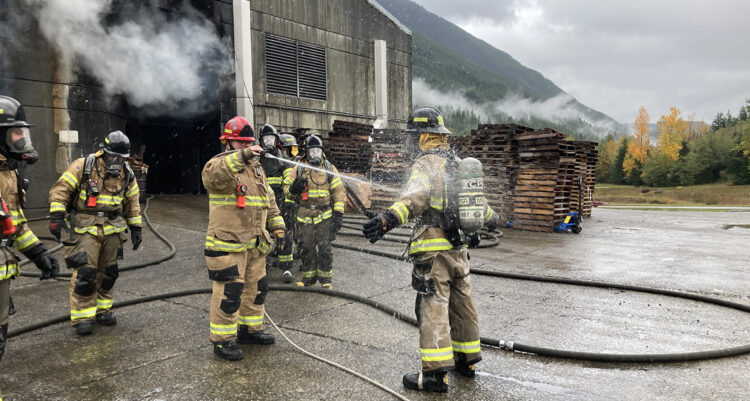
- Source: deohs.washington.edu
Fire personnel confront physical hazards encompassing extreme heat and smoke, risking respiratory problems, burns, and heat stress. Musculoskeletal injuries arise from lifting heavy equipment and navigating challenging terrain. Psychological stress stems from traumatic events, posing a risk of post-traumatic stress disorder and other mental health challenges during firefighting.
Firemen face diverse chemical hazards, inhaling toxic fumes during fires, exposing them to potential poisoning and respiratory issues. The use of AFFF introduces forever chemicals, heightening cancer concerns. Also, older structures may release asbestos during firefighting, posing a risk of lung cancer to fire personnel.
A study reported by The Guardian reveals a startling reality. It revealed that fire personnel are over three times more likely to succumb to certain cancers than the general population. Overall, firefighters face a 1.6 times higher risk of cancer-related deaths than the general population, as documented in the Journal of Occupational Medicine.
It emphasizes the potential health risks associated with their exposure to toxic chemicals during firefighting efforts.
Health Implications for Firefighters
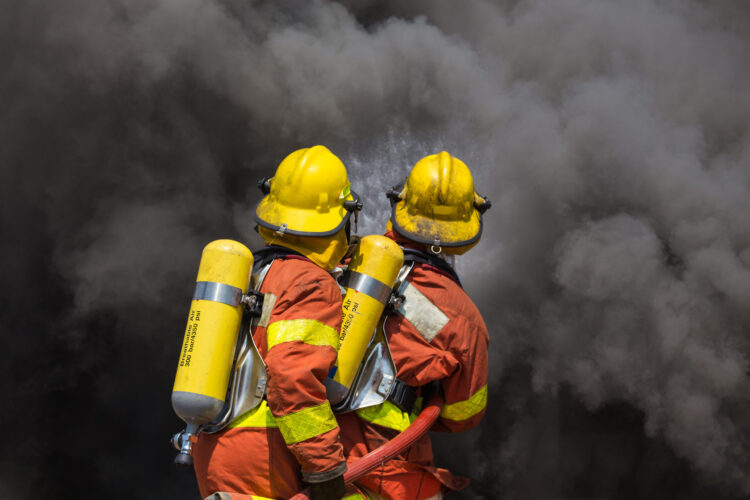
- Source: airchecklab.com
Firefighting, while heroic, poses multifaceted health risks. Elevated cancer risks, especially for testicular, kidney, and non-Hodgkin lymphoma, stem from exposure to carcinogens in smoke and PFAS-containing foams. Respiratory diseases, cardiovascular issues, musculoskeletal injuries, and mental health concerns compound the challenges.
Toxic chemical exposure introduces specific worries like liver damage and immune system suppression. This comprehensive spectrum of health concerns underscores the need for heightened awareness and proactive measures in safeguarding fire personnel’s well-being.
The health implications for fire personnel are complex and multifaceted. Additional research is crucial to comprehensively understand the long-term effects of occupational exposure, enabling effective interventions to safeguard their well-being.
Regulations and Guidelines
Crucial initiatives are underway to address PFAS exposure risks among firefighters. Many jurisdictions restrict or ban toxic foam use, promoting alternatives. Encouraging exposure monitoring enables the assessment and identification of high-risk individuals. Emphasizing proper personal protective equipment (PPE), including respirators and gloves, minimizes exposure during firefighting.
Thorough decontamination procedures, post-firefighting activities, and public education efforts play pivotal roles in preventing toxic exposure and fostering informed decision-making.
Fire personnel face challenges in the dynamic regulatory landscape of PFAS, demanding consistent compliance across jurisdictions. Developing safer alternatives to toxic foam is imperative for long-term health, driving ongoing research efforts. Legacy contamination in gear and facilities requires strategic remediation to prevent further exposure.
Addressing data gaps and research needs is pivotal for a comprehensive understanding of exposure effects and the implementation of effective mitigation strategies.
Challenges in Mitigation
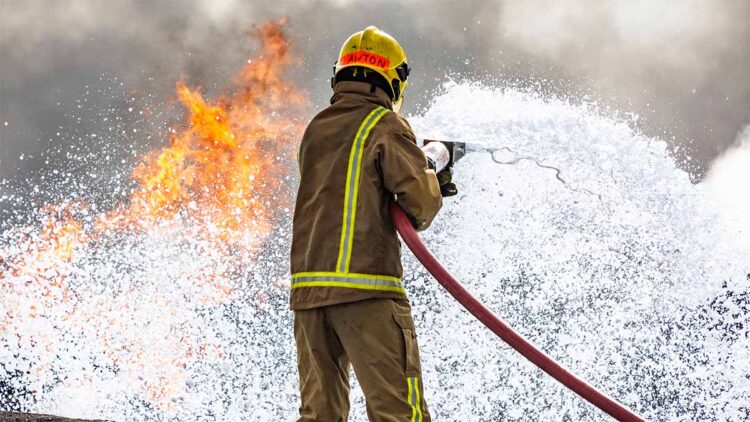
- Source: personneltoday.com
Mitigating the risks associated with AFFF and PFAS among firefighters presents a multifaceted challenge. One significant hurdle lies in finding effective alternatives to firefighting foam that maintain firefighting efficiency while minimizing health risks. Identifying and implementing substitute materials demands rigorous research and development to ensure the safety of both firefighters and the environment.
Complicating matters is the persistence of forever chemicals in the environment, which poses challenges for cleanup and remediation efforts. Also, addressing the historical use of firefighting foam poses logistical challenges, as many firefighting facilities may still possess stockpiles of these foams. Proper disposal and transitioning to safer alternatives demand strategic planning and financial investments.
Navigating the Crossroads of Safety and Effectiveness
Concluding the in-depth exploration of the intricate link between AFFF, PFAS, and heightened cancer risks among firefighters reveals a poignant narrative. Its crucial role in firefighting, intertwined with forever chemical health risks, demands immediate attention and resolute action to ensure fire personnel’s well-being.
Navigating safety and efficacy crossroads demands acknowledgment of challenges, adoption of innovation, and prioritization of the well-being of dedicated protectors. This deep dive serves as a clarion call, urging collective responsibility and uniting stakeholders in mitigating risks. Together, we ensure a safer tomorrow for frontline heroes.

